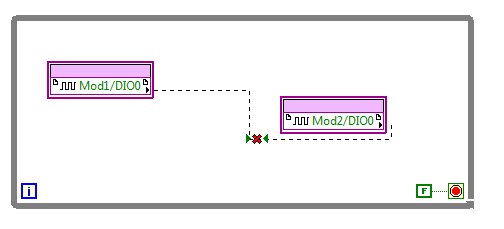Just wondering if there is a built in VI to clear the warnings in the error cluster, essentially setting the error code to 0 if error status is false. It is a trivial matter to write on such VI oneself, but I am just wondering if there is any built in VI to do this.
I find this function useful when propagating error cluster through out a loop. If a warning is generated by a vi inside the loop, it will get propagated into next iterations, which makes all the error out terminals inside the loop to have this warning . This makes it hard to tell where does that error comes from.










